Ocean Craft Marine to Create 'Maritime Innovation Lab'
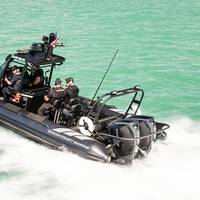
Ocean Craft Marine, a rigid hull inflatable boat (RHIB) builder and maritime solution provider, will invest more than a quarter billion dollars over the next 10 years to establish the an independent maritime innovation laboratory, the company announced on Wednesday.The goal of the laboratory, called the Accelerator for Innovation in the Maritime Ecosystem (AIME), will be to enable ideation, collaboration, cross-pollination and integration among and between maritime industry peers in order to accelerate industry innovation especially within…
Kline Joins Martin & Ottaway
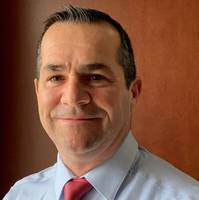
James “Jim” Kline, USCG (Ret)., has joined Martin, Ottaway, van Hemmen & Dolan, Inc. as an engineering and surveying consultant.Martin, Ottaway, van Hemmen & Dolan, Inc. is a New York area maritime consulting firm that has been in continuous operation since 1875. The firm provides engineering, operational, and financial analysis/ship valuation services to the worldwide maritime community. Each year the firm performs hundreds of projects related to new construction, ship surveys…
MOL Conducts LNG Bunkering at Nagoya Port
Japanese utility Toho Gas and shipping company Mitsui OSK Lines (MOL) carried out a demonstration test to supply liquified natural gas (LNG) to the to the tugboat Ishin at the Japanese port of Nagoya.This marked the first LNG bunkering in the Port of Nagoya, and the test confirmed that LNG can be safely supplied to vessels at the port.LNG was transported via truck from the Toho Gas Chita-Midorihama LNG Terminal (Chita-shi, Aichi Prefecture), and supplied with a truck-to-ship system to Ishin, berthed at the Port of Nagoya's Garden Pier.Also cooperating in the demonstration test were, Niyac Corporation, which provides LNG land transport for Toho Gas…
SHORTSEA SHIPPING: All the Right Moves (Finally)
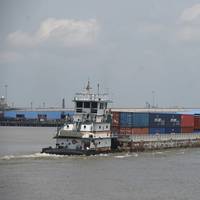
Marine Highways Gain Traction in the Intermodal Supply Chain.In the United States, landside infrastructure is at a crisis point. Congestion at the big hub ports, exacerbated by imperfect intermodal interfaces with surface transport serving cargo hinterlands is at the heart of the matter. As politicians bicker over a possible infrastructure package, the Highway Trust Fund, funded by taxes on gasoline and diesel fuel, has continued its downward journey towards further deficits (now $144 billion). And, where countless U.S.
MOL Trials LNG-Fuelled Tugboat at Kobe
Japanese shipping company Mitsui O.S.K. Lines (MOL) has taken part in the first bunkering of liquefied natural gas (LNG) into a tugboat at the Port of Kobe, Japan.At the Port of Kobe, the tugboat “Ishin” was bunkered with LNG. It is the first LNG-fuelled tugboat in Japan and it is operated by a MOL group subsidiary, Nihon Tug-Boat.LNG fuel for the trial was hauled by a tanker truck from the Himeji LNG Plant of Osaka Gas, and, via a truck-to-ship system, was used to supply Ishin, berthed at Kobe Port’s Shinko Pier No.4. MOL Marine Co. has also provided maritime consulting in the trial.Effective January 2020, vessel exhaust emission regulations will be tightened on a global scale.In response to the new standards…
Ecochlor Names Weiss as European RBDM

Henrik Weiss believes that “the sale of a ballast water management system (BWMS) is a long-term commitment to the client, especially in the marine industry where support and service is a pre-requisite throughout the product lifecycle.” As Ecochlor’s new Regional Business Development Manager (RBDM) in Europe, Scandinavia and UK, this approach is perfectly in synch with Ecochlor’s unique service and manufacturing strategy.Mr. Weiss is well-known in the European maritime market with more than 30 years of experience…
The EPA's Clean Water Act and Understanding VGP
The Vessel General Permit (VGP) falls under the National Pollutant Discharge Elimination System (NPDES) of the Federal Water Pollution Control Act (FWPCA), better known as the Clean Water Act. It is administered by the US Environmental Protection Agency (EPA), an agency not well known or understood by the maritime industry.For years, the EPA had adopted a policy of broadly exempting discharges into the water that were incidental to normal operation of vessels. That changed after environmental advocacy groups prevailed in a judicial challenge. The first iteration of the VGP entered into effect in 2008 and remained in effect until replaced by the current iteration in 2013.
Serious Questions Surround BWMS Testing
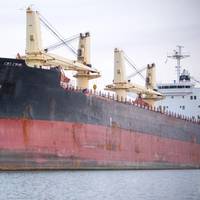
Serious questions have been raised regarding the testing of ballast water management systems (BWMSs). In order for a BWMS manufacturer to sell its equipment for use on commercial vessels operating in U.S. waters, the equipment must be tested in accordance with U.S. Coast Guard and Environmental Protection Agency (EPA) requirements and the equipment must then obtain a type approval certificate from the Coast Guard. To date, type approval certificates have been issued to six manufacturers and others are in the pipeline.
El Faro and Perceived Deficiencies in the ACP
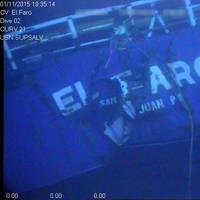
The October 1, 2015 loss of the U.S. cargo vessel El Faro along with its 33 member crew led to the convening of a Coast Guard Marine Board of Investigation charged with determining as closely as possible the cause(s) of the casualty; whether there is evidence that any failure of material was involved; whether there is evidence of misconduct, inattention to duty, negligence, or willful violation of law; and whether there is evidence that government personnel contributed to the casualty. The Marine Board released its report on October 1, 2017, the second anniversary of the casualty.
US Navy: Back to Basics
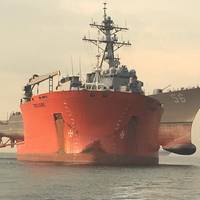
The U.S. Navy has a well-deserved reputation for seamanship in trying conditions. Recently though, the Navy has suffered a series of marine casualties, including the fatal collisions involving two destroyers of the Pacific Fleet. On June 17, USS Fitzgerald (DDG-62), an Arleigh Burke-class destroyer, was involved in a collision with the container ship ACX Crystal off Japan, resulting in the deaths of seven Navy crewmembers. The destroyer was severely damaged and is being returned to the United States via heavy-lift vessel for extensive repairs. On August 21, USS John S.
Hepburn and Sons to Help Boost Virginia Economy
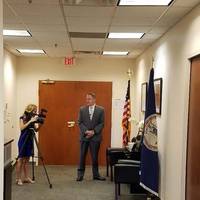
Twelve Virginia companies were recently selected by the Governor’s office to participate in the Virginia Economic Gardening Pilot Program (VEGPP) ,which aims to advance the local economy. One of the companies selected was the veteran-owned small business Hepburn and Sons LLC, a provider of maritime consulting and engineering support services. The VEGPP, administered by the Virginia Economic Development Partnership (VEDP), seeks out small business which have shown promise and offer strategic solutions to further company growth. Capt.
Salvage and Marine Firefighting
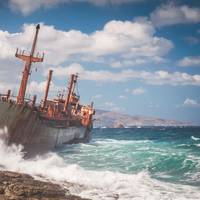
Salvage and marine firefighting are complex response efforts often undertaken in adverse weather and sea conditions. While no two oil spill responses are the same, the diversity of variation between any two oil spill responses is not near as great as the diversity of any two salvage and marine firefighting responses. As a result, salvage and marine firefighting response providers must plan for and anticipate a wide range of variation in what will be required to address their portion of a marine casualty. The U.S.
Melting Sea Ice: A Canary in the Coal Mine
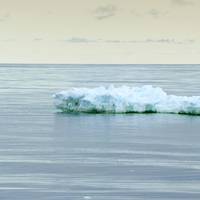
The rapid loss of Arctic sea ice is a sentinel. Most of us will never venture into the Arctic, but it can and does provide us with a forewarning of impacts coming to our parts of the Earth – and some of the most significant impacts will directly affect the maritime industry. In earlier times, coal miners were sometimes overcome by the buildup of odorless carbon monoxide gas. Some died as a consequence. Eventually it was realized that canaries were more susceptible to the gas than were humans.
Biofouling Keep Out!
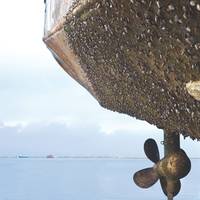
Biofouling was a backburner issue until 5 March 2017. On that day the Government of New Zealand ordered the bulk carrier DL MARIGOLD out of NZ waters after the vessel’s hull was determined to be excessively fouled with potentially invasive organisms including barnacles and tube worms. The bulker was not allowed back until it showed that the underwater surfaces had been thoroughly cleaned. This was the first known instance of a vessel expulsion due to biofouling. It was also significant…
Flores Named VP at NETSCo

Engineering, design and maritime consulting services provider NETSCo, Inc. has recently promoted Jan Flores to vice president, and welcomed new additions Trish McIntyre as engineering manager and Matt Davidson as junior naval architect/marine engineer. “In recent years, Jan has been instrumental in the success and growth of NETSCo and I am excited to promote him to this important position,” said Rich Mueller, founder, president and CEO of NETSCo. “Jan’s experience in taking our company goals and vision to new levels has strengthened our status as an industry leader.
Lines in the Water
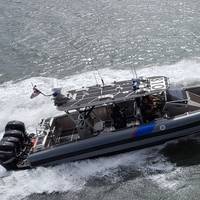
There are a variety of jurisdictional lines in the water. The first line to be considered is the national boundary between two adjacent or nearby countries. Adjacent countries tend to draw agreed boundaries extending their shoreside boundaries, with accommodations for headlands, capes, etc. Most national boundaries have been agreed upon long ago. A few, though, are not officially resolved. Somewhat surprisingly, of the four marine boundaries between Canada and the U.S., three are still in dispute.
Cabotage Rules Changes Proposed

On January 18, 2017, the U.S. Customs and Border Protection (CBP) proposed in its Customs Bulletin & Decisions newsletter a significant change to the U.S. cabotage rules. For many years, use of non-coastwise-qualified vessels in the transportation of pipeline repair material; anodes; pipeline connectors; wellhead equipment, valves and valve guards; damaged pipeline; platform repair material; and similar items from a U.S. point to another point within U.S. waters and/or those on the outer continental shelf has been ruled by CBP (and its predecessor U.S. Customs Service) as consistent with U.S.
Coral Reefs: A Unique Natural Resource
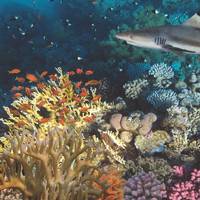
Stony corals are marine invertebrates with somewhat unique life cycles. For the most part, they reproduce sexually, broadcasting gametes into the water. Often, an entire coral colony or reef will spawn on the same night. Coral may also reproduce asexually by producing genetically identical polyps. Fertilized gametes drift in the current until, hopefully, they alight on a hard surface like a rock suitable for attachment. The gamete then develops into a polyp, producing a basal plate that affixes itself to the hard surface.
Salvage and Marine Firefighting Verification
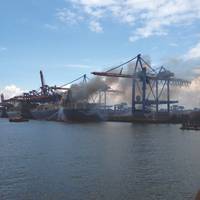
The U.S. Coast Guard regulations regarding salvage and marine firefighting (SMFF) as elements of vessel response plans (VRPs) for tank vessels have been in place since December 31, 2008. On September 30, 2013, these regulations were expanded to include non-tank vessels with a capacity of 2,500 barrels or greater of fuel oil. The VRP requirement was established by the Oil Pollution Act of 1990 (OPA 90). be resubmitted for approval of each significant change. The salvage and marine…
Artificial Stupidity
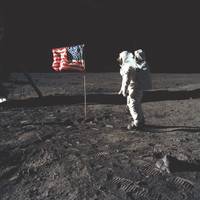
There is increasing speculation regarding when the first unmanned cargo ship will set sail. The more important question is when will the first unmanned cargo ship spectacularly fail? We (not me personally, but humans as a group) have utilized artificial intelligence to launch unmanned craft into space on increasingly long and complex voyages. Mostly, these space missions succeed and provide us with wonderful images and reams of important data. Therefore, it is theoretically and practically possible to construct and operate an unmanned cargo ship.
Silence Your Ships
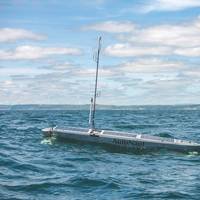
Anthropogenic (manmade) sound is creating havoc among marine mammals and other aquatic species. These creatures have very sensitive hearing, which they rely on to find food and mates and (for some) to communicate and navigate. Sound waves can travel much further and with much less loss of strength in water than in air. In pre-industrial times, the oceans were relatively quiet. Sailing ships generated almost no subsurface noise. A whale’s call could be heard by another whale hundreds of miles away in ambient conditions.
Ballast Water Management Systems: Let the Games Begin

With the accession by Finland to the International Convention for the Control and Management of Ships’ Ballast Water and Sediments, 2004 (better known as the Ballast Water Management or BWM Convention), there are now sufficient ratifications for the Convention to enter into force. Entry into force will occur on 8 September 2017. It has been an agonizingly slow process for a convention that was adopted with such high hopes. Starting in the late 1970s as vessels became larger and faster…
America Needs Icebreakers
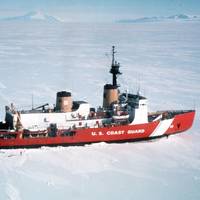
Russia has more polar icebreakers than the rest of the world combined. America has one polar icebreaker and that one is well past its prime. There has been talk of sharing icebreakers. Sharing may work with allies, who are generally on the same page. Sharing will not work with Russia, which views the world as a zero-sum game. In June 2016, Russia announced the launching of Arktika, the world’s largest polar icebreaker. With a full load displacement of 33,540 tons, a length of 173.3 meters and a breadth of 34 meters, it will be capable of breaking ice up to 2.9 meters.





